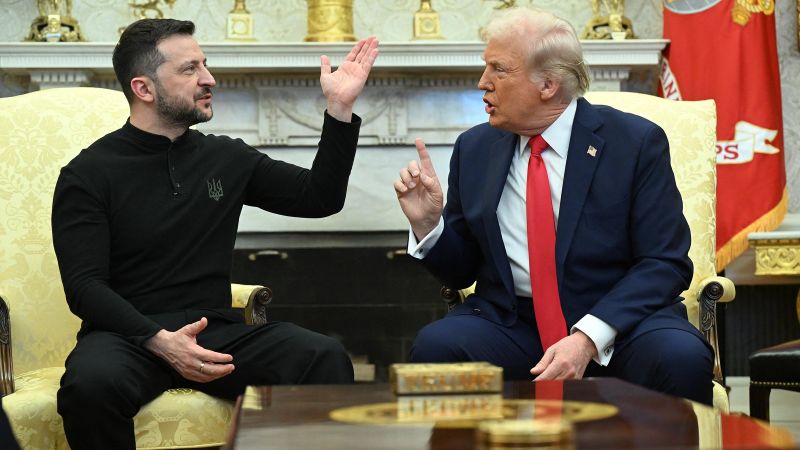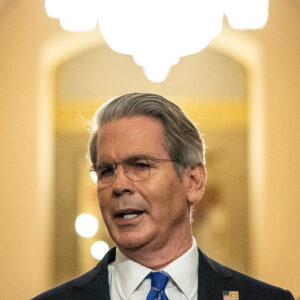
Foreign leaders’ visits to the White House have traditionally been opportunities for face-to-face diplomacy, marked by cordial interactions and symbolic photo opportunities. However, President Donald Trump’s recent public rebuke of Ukraine’s President Volodymyr Zelensky has disrupted these norms, causing unease among international leaders.
During a February meeting, Trump chastised Zelensky, stating, “You’re not acting all that thankful,” while Vice President JD Vance echoed the sentiment in front of the global press. As Zelensky sought more support in Ukraine’s conflict with Russia, Trump at one point threatened to abandon Ukraine entirely, turning the meeting into a contentious exchange. This incident, along with unfounded allegations against South African President Cyril Ramaphosa and tense interactions with Canada’s Prime Minister Mark Carney, has signaled to foreign dignitaries that Oval Office visits in Trump’s second term require a different approach.
Changing Dynamics in the Oval Office
Five former senior diplomats, experienced in organizing such meetings, have compared Trump’s White House to a boxing ring or a television set. They advise that leaders should now prepare for diplomatic “jiu jitsu,” trolling, or even “North Korean” style adulation. The key, they say, is to never publicly contradict Trump, as this could lead to a loss of face, something he cannot tolerate.
Gérard Araud, France’s former ambassador to the US, emphasizes this point: “You never contradict Trump publicly, because he will lose face and that’s something that he can’t accept.” As Israeli Prime Minister Benjamin Netanyahu prepares for his upcoming White House visit, there are indications he is keen to avoid any potential conflict, despite his close ties with Trump. Following Trump’s statement about being “very firm” with Netanyahu regarding a Gaza ceasefire, an Israeli official quickly accepted a 60-day ceasefire proposal.
Trump 2.0: A Different Diplomatic Era
For Lithuania’s former foreign minister, Gabrielius Landsbergis, Trump’s meetings with foreign leaders are opportunities for him to assert his dominance. “This is a show,” he told CNN. Trump himself hinted at this when he quipped at the end of his meeting with Zelensky, “This is going to be great television.”
Arturo Sarukhán, Mexico’s former ambassador to Washington, described these interactions as “diplomatic vandalism and trolling.” According to Joe Hockey, Australia’s former ambassador to the US, Trump is now more confident in wielding his power, stating, “He’s a far more formidable negotiator.” Since January, allies and adversaries alike have faced unprecedented tariffs and the challenge of appeasing Trump for favorable trade terms.
“European leaders especially are in a sort of denial. They are panicking.” — Gérard Araud
Breaking from Tradition
The Oval Office, adorned with gold details, reflects Trump’s unique vision of American history, serving as both a showplace and a workplace. Unlike the structured bureaucracy of previous administrations, Trump’s White House operates more like a royal court, according to Araud. Without personal access to Trump or his family, foreign leaders may struggle to make progress on their agendas.
Rufus Gifford, former US ambassador to Denmark, highlighted the shift from past practices: “You were supposed to respect some basic decency,” he said. Meetings were once seen as opportunities for mutual respect and benefit. Gifford advised leaders to make the most of their limited time with the US president, focusing on building personal connections.
Arturo Sarukhán recalled the careful planning of past diplomatic visits, such as Mexican President Vicente Fox’s visit to President George W. Bush’s Texas ranch. These visits were meticulously crafted to foster goodwill and shared interests.
Advice for Navigating Trump’s Diplomacy
Landsbergis advises leaders to approach meetings with Trump as they would a television appearance, considering their domestic audience’s perception. While pushing back against Trump can be risky, it might not always be a losing strategy. Sarukhán suggests that demonstrating the ability to handle “jiu jitsu” with Trump can be advantageous.
Gifford warns that Trump thrives on keeping foreign leaders off balance, sometimes through physical gestures like aggressive handshakes. Araud advises subordination, suggesting leaders should express gratitude and allow Trump to dominate the conversation.
“Trump’s the only one making decisions, and he’s making decisions from the hip.” — Gérard Araud
Despite the risks of an Oval Office visit turning into a televised confrontation, Landsbergis believes the potential rewards outweigh the dangers. For smaller countries, it may be the only chance to directly convey critical messages to Trump, such as concerns about Russian aggression.
Navigating the complexities of Trump’s Oval Office requires treating him as “a whimsical and unpredictable child,” Araud said. Ultimately, the decision-making power rests solely with Trump, and foreign leaders must adapt to this new diplomatic reality.







